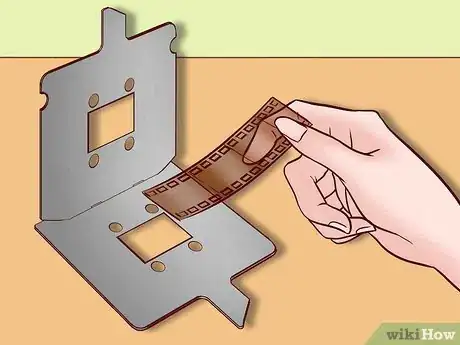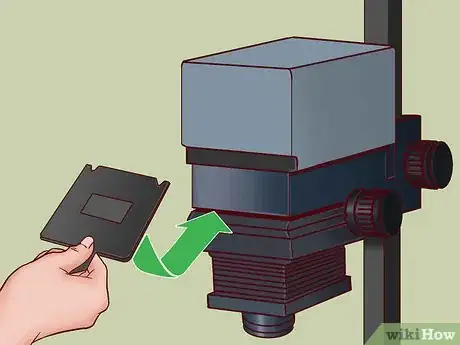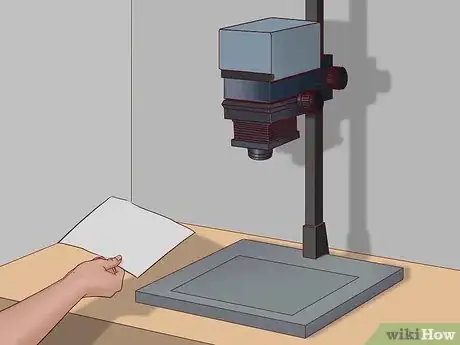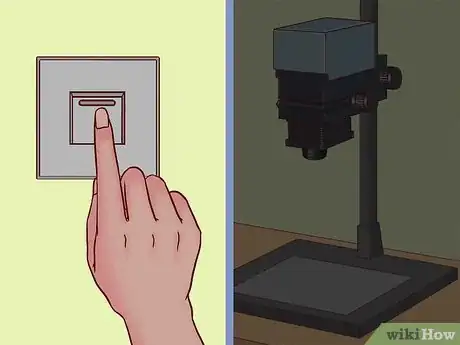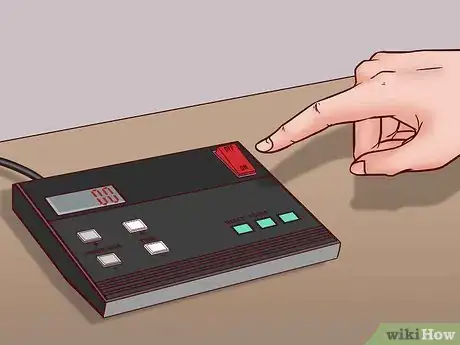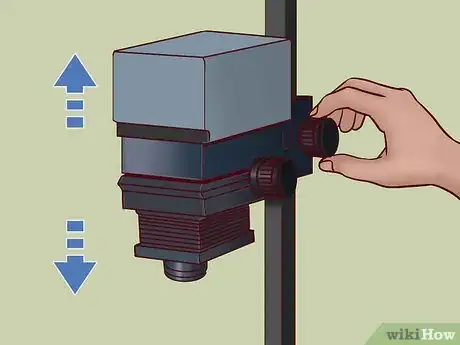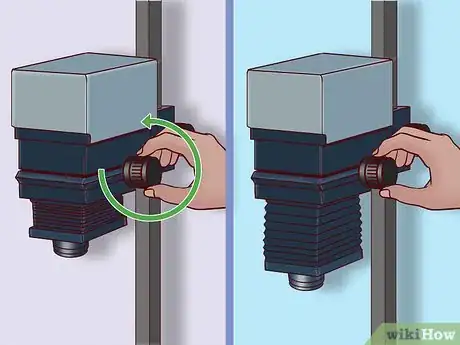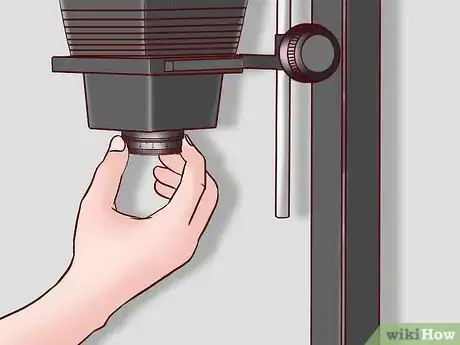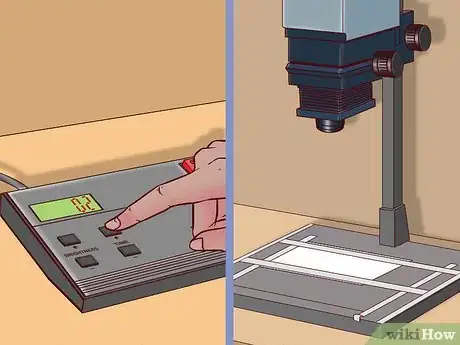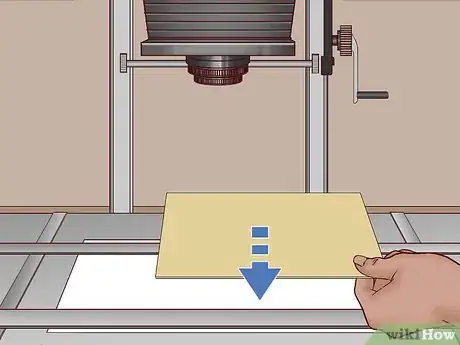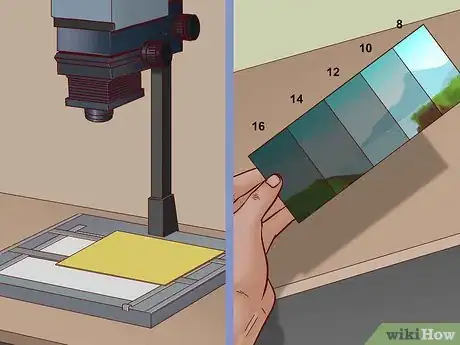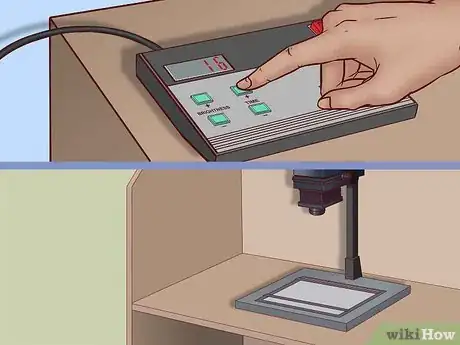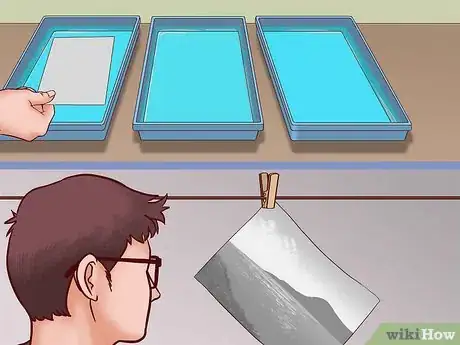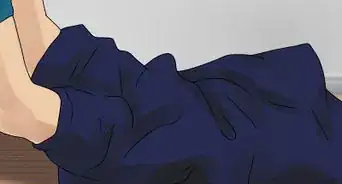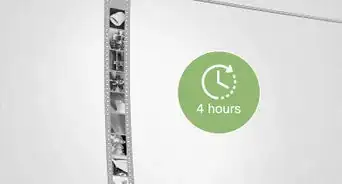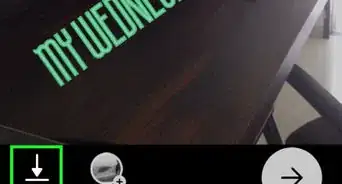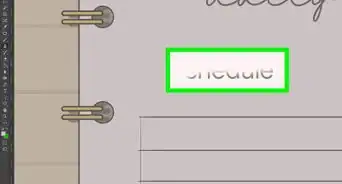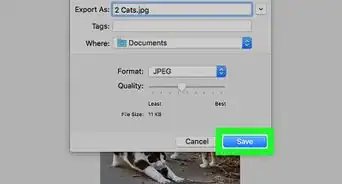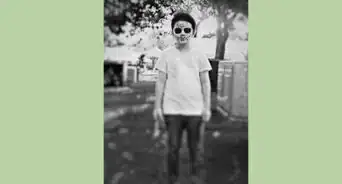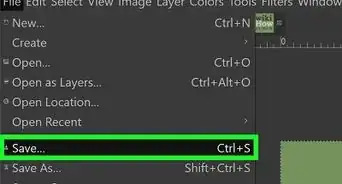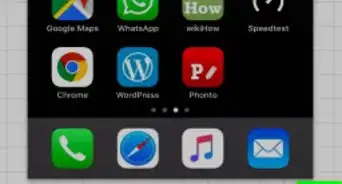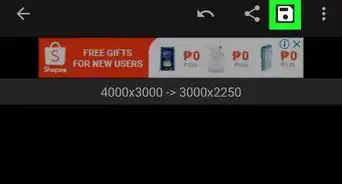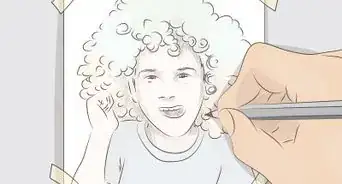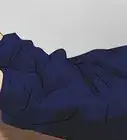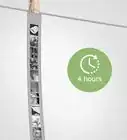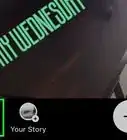This article was co-authored by wikiHow staff writer, Kyle Hall. Kyle Hall works on the content team at wikiHow. He helps manage our team of editors and creates content for a variety of wikiHow projects. Kyle continually looks for new ways to improve the content at wikiHow and make it more helpful and enjoyable for readers. He graduated from Eckerd College in 2015, where he majored in Political Science.
There are 9 references cited in this article, which can be found at the bottom of the page.
This article has been viewed 81,322 times.
Learn more...
A photo enlarger is a necessary tool for developing film photographs. It lets you project your negative onto a piece of photo paper, enlarging the image in the process. A photo enlarger can seem confusing if it’s your first time in a darkroom, but fortunately, it’s easy to use once you get the hang of it. Before you make your final print, you'll need to develop a test strip using the enlarger to determine what the best exposure time is for your image.
Steps
Setting Up the Enlarger
-
1Place your negative in the enlarger carrier. The enlarger carrier is a plastic tray that slides out of the enlarger. To put your negative in it, open up the tray, and insert the negative into it so the image you want to enlarge is lined up with the square hole in the tray. Then, close the tray, and slide the carrier back into the enlarger.[1]
- The enlarger will project your image upside down, so invert it when you place it in the carrier.[2]
Tip: Depending on the enlarger you’re using, you may need to turn a switch on the side of the device to unlock the carrier tray so you can slide it out.
-
2Clamp the enlarger down over the carrier. Clamping down the enlarger will seal the negative inside of the enlarger carrier. The right way to clamp down the enlarger will depend on the photo enlarger you’re using, but there’s usually a switch or lever on the side of the device that you’re supposed to pull or turn.[3]
- If you turned a switch to unlock the enlarger carrier so you could slide it out, turn that switch again to clamp down the enlarger.
Advertisement -
3Position a sheet of scrap paper on the projection plane. The projection plane is the flat frame that holds the paper you’ll be projecting onto. Lift up the top layer of the frame, and insert a scrap piece of paper before closing it again. Then, place the frame back down on the base of the enlarger.[4]
- Don’t use regular photo paper yet since the lights in the room will ruin it.
-
4Turn off the lights in the darkroom. Turning the lights off will make it easier to see your image projected on the piece of scrap paper. It’s also important that you turn the lights off since you’ll be working with actual photo paper later on. If the lights are on when you remove the photo paper from the packaging, it will be ruined.[5]
- Make sure the darkroom you’re in is completely closed off from external sources of light.
- The darkroom should have a red safety light on so you can see what you’re doing in the dark. The red light won’t affect the photo paper you’ll be using later on.
-
5Turn the enlarger on using the timer. The timer is the small box that’s connected to the enlarger by a cord. To turn the enlarger on, locate the “on” switch on the timer and flip it. After you flip it, the display on the timer should light up. Then, press the “outlet focus” to turn the light bulb inside the enlarger on.[6]
- Once you turn the light bulb on, you should see your image projected on the scrap piece of paper.
-
6Adjust the height of the enlarger until the image fits on the scrap paper. There should be a knob on the enlarger, near the back or on the side, that allows you to raise and lower it. When you raise the enlarger, the projected image will get bigger, and when you lower the enlarger, the image will get smaller.[7]
- Make sure none of the image is off the paper. Any portions of the image that aren’t on the paper won’t show up when you make your final print.
- You also don’t want the image to be too small or you’ll have blank space around it when you make your print. The edges of the image should line up perfectly with the edges of the scrap paper.
-
7Focus the image using the knob on the side of the enlarger. When you first enlarge a negative, it will likely be out of focus. To fix that, turn the knob clockwise or counterclockwise until the image looks clear and crisp.[8]
- When you adjust the focus knob, a lens on the enlarger will move up or down, changing the focus.
- If the image gets blurrier when you adjust the focus, turn the knob in the opposite direction.
-
8Set the aperture on the enlarger to f/8 for most photographs. The aperture setting determines how wide the lens opening on the enlarger is. The higher the aperture, the wider the lens and the more light that passes through. The more light that passes through, the brighter your image will be. To adjust the aperture, rotate the lens on the enlarger until you get to f/8.[9]
- The right aperture setting can vary depending on the image you’re printing, but generally, f/8 is a good place to start.
Testing the Exposure
-
1Cut a strip of photo paper to test the exposure with. Before you print onto a full-size sheet of photo paper, you’ll need to test several exposure times on a strip of photo paper to see which time is best for your image. Cut a strip that’s wide enough to capture a detailed portion of the image. The size of the strip doesn’t need to be precise.[10]
- You’ll need to use actual photo paper to test the exposure since you’ll be developing it.
Warning: Don’t turn on the lights to cut your photo paper or the strip will be ruined.
-
2Place the strip of paper on the projection plane. Open up the top of the frame, and place the strip inside of it. Then, close the frame.[11]
- Position the strip so it will capture a detailed portion of the image, which will make it easier to determine which exposure time is best.
-
3Expose the entire strip of paper to light for 2 seconds. First, use the dial on the timer to set the exposure time to 2 seconds. Then, press the “start” button on the timer to turn on the light bulb inside the enlarger. After 2 seconds, the light should turn off.[12]
-
4Cover one-fifth of the strip, and expose the rest of it for another 2 seconds. Use a piece of thick scrap paper to cover up the end of the strip. That way, that portion of the strip won’t be exposed to any more light, and you’ll be able to see what 2 seconds of light exposure looks like once you develop it. After you cover one-fifth of the strip, set the timer to 2 seconds, and press the start button.[13]
- At this point, the rest of the strip will have been exposed to light for 4 seconds.
-
5Repeat until you’ve exposed 5 sections to different durations of light. For each additional section, increase the exposure time. Use the following schedule for the remaining 3 sections:[14]
- Cover two-fifths of the strip and expose it to 4 seconds of light.
- Cover three-fifths of the strip and expose it to 8 seconds of light.
- Cover four-fifths of the strip and expose it to 12 seconds of light.
-
6Develop the test strip. Dip the strip of paper in a development bath for 60 seconds. Then, transfer it to a stop bath for 30 seconds, stirring it continuously. Next, submerge the paper in a fix bath for 30 seconds. Finally, rinse it with water for 1-2 minutes.[15]
- When you’re finished developing the image, you can turn the lights back on.
-
7Use the test strip to determine the best exposure time for your final print. Your developed image should be divided into 5 distinct sections. Choose the section that looks the best (not too bright and not too dark), and write down the exposure time for that section so you can use it for your final print. The exposure times for the different sections are:[16]
- First section: 2 seconds.
- Second section: 4 seconds.
- Third section: 8 seconds.
- Fourth section: 16 seconds.
- Fifth section: 28 seconds.
-
8Make a more specific test strip if none of the exposures look quite right (optional). The test strip is a good way to narrow down what exposure time might be best for your image. However, if none of the strip colors are what you want, try making another test strip with exposure times in closer increments.
- For example, if 8 seconds is too bright and 16 seconds is too dark, try making a test strip with five sections between 8 and 16 seconds. To do this, expose the whole paper for 8 seconds, then expose each of the next 4 sections for 2 seconds. Your new test strip will then display exposures of 8 seconds, 10 seconds, 12 seconds, 14 seconds, and 16 seconds.
- Depending on the image, you may want to try 5-second intervals instead.
Enlarging and Developing Your Final Print
-
1Turn the lights off again. Do this before you remove the photo paper for your final print so it’s not ruined by the light. If it’s not still on, turn the red safety light on so you can see what you’re doing.[17]
-
2Place a full sheet of photo paper on the projection plane. Lift up the top of the frame, insert the paper, and close the frame. Then, place the projection plane on the base of the enlarger.[18]
-
3Expose the paper to light using your desired exposure time. Set the exposure time on the timer using the dial. Then, make sure the projected image is lined up with the photo paper, and press the start button on the timer.[19]
- For example, if you liked the image quality for 16 seconds of exposure time on the test strip, you’d set the timer to 16 seconds.
-
4Develop your final print. Repeat the developing process that you used for the test strip. Start with the development bath for 60 seconds, then dip the paper in the stop bath for 30 seconds. Finally, transfer the paper to the fix bath for 30 seconds before rinsing it off with water.[20]
- When you’re finished developing your final print, hang it up to dry in the darkroom.
Community Q&A
-
QuestionWhat's involved in the process of enlarging a film to a positive image?Enlarging a film negative to a positive image involves selecting and cleaning the negative, setting up the enlarger, and exposing, developing, fixing, and rinsing the photographic paper. Proper safety protocols must be followed while handling chemicals.
Warnings
- Never turn on the lights when you have photo paper out in the open.⧼thumbs_response⧽
Things You’ll Need
- Film negatives
- Darkroom
- Scrap paper
- Photo paper
- Scissors
- Film developing chemicals
- Trays
References
- ↑ https://www.youtube.com/watch?v=CzcwkoYMaF8&feature=youtu.be&t=260
- ↑ https://www.lomography.com/magazine/230281-tutorial-how-to-print-with-a-photographic-enlarger
- ↑ https://www.youtube.com/watch?v=CzcwkoYMaF8&feature=youtu.be&t=274
- ↑ https://www.youtube.com/watch?v=CzcwkoYMaF8&feature=youtu.be&t=352
- ↑ https://www.lomography.com/magazine/230281-tutorial-how-to-print-with-a-photographic-enlarger
- ↑ https://www.youtube.com/watch?v=CzcwkoYMaF8&feature=youtu.be&t=44
- ↑ https://www.amateurphotographer.co.uk/technique/expert_advice/essential-guide-to-darkroom-printing-44370
- ↑ http://www.jollinger.com/photo/enlargers/guide-to-enlargers.htm
- ↑ https://www.lomography.com/magazine/230281-tutorial-how-to-print-with-a-photographic-enlarger
- ↑ https://petapixel.com/2018/03/06/make-bw-photo-print-darkroom-7-minute-crash-course/
- ↑ https://aphototeacher.com/2010/02/28/printing-photographs-in-the-darkroom/
- ↑ https://www.lomography.com/magazine/230281-tutorial-how-to-print-with-a-photographic-enlarger
- ↑ https://www.lomography.com/magazine/230281-tutorial-how-to-print-with-a-photographic-enlarger
- ↑ https://www.lomography.com/magazine/230281-tutorial-how-to-print-with-a-photographic-enlarger
- ↑ https://www.lomography.com/magazine/230281-tutorial-how-to-print-with-a-photographic-enlarger
- ↑ https://aphototeacher.com/2010/02/28/printing-photographs-in-the-darkroom/
- ↑ https://www.lomography.com/magazine/230281-tutorial-how-to-print-with-a-photographic-enlarger
- ↑ https://aphototeacher.com/2010/02/28/printing-photographs-in-the-darkroom/
- ↑ https://petapixel.com/2018/03/06/make-bw-photo-print-darkroom-7-minute-crash-course/
- ↑ https://www.lomography.com/magazine/230281-tutorial-how-to-print-with-a-photographic-enlarger
